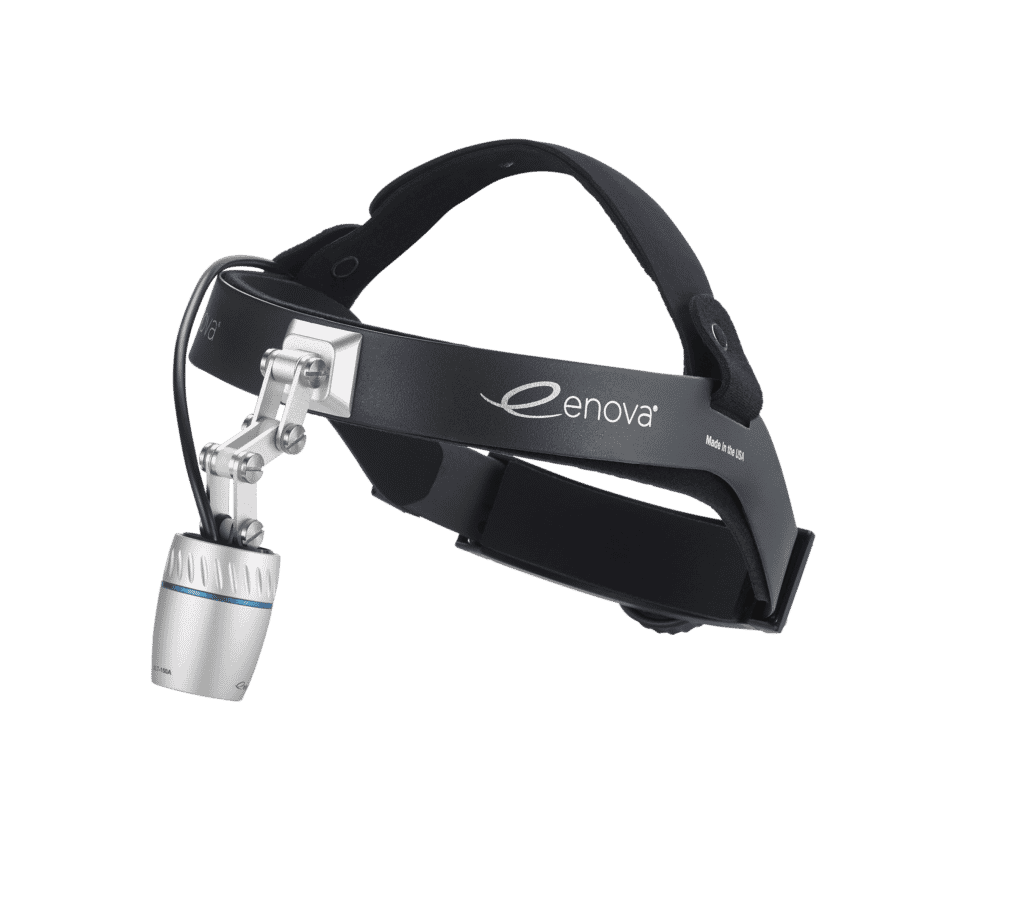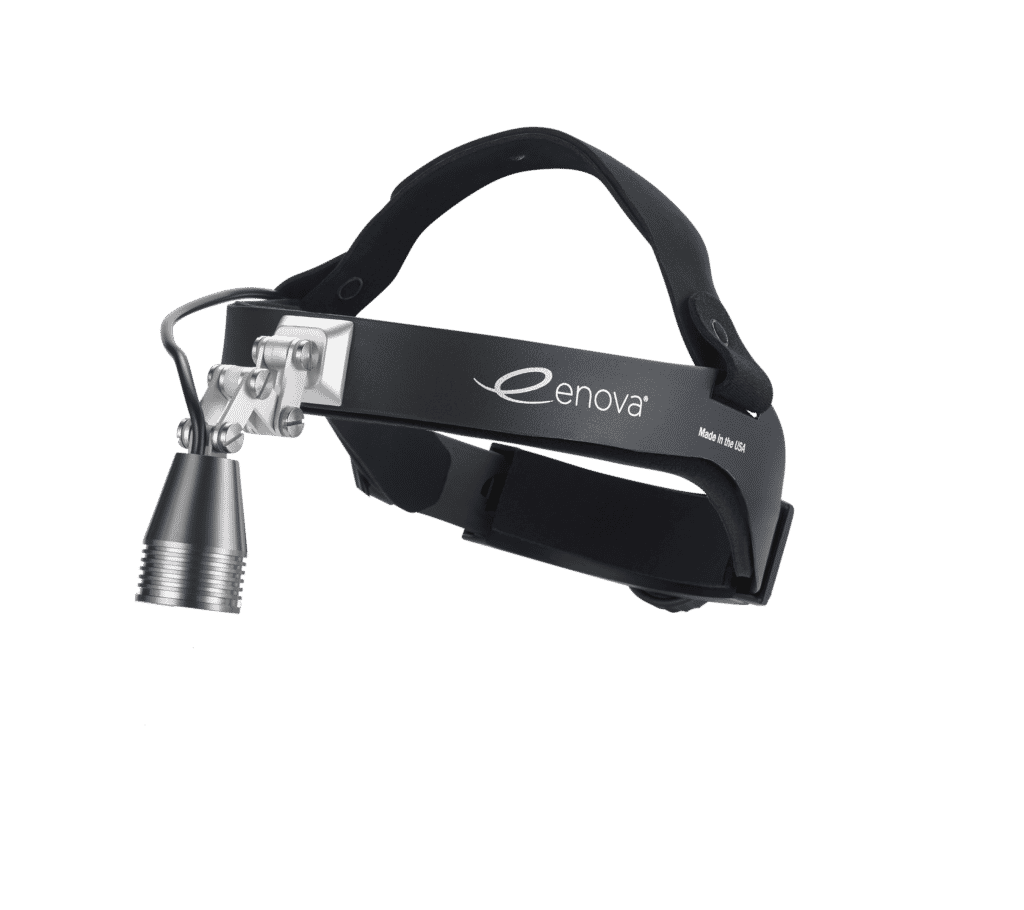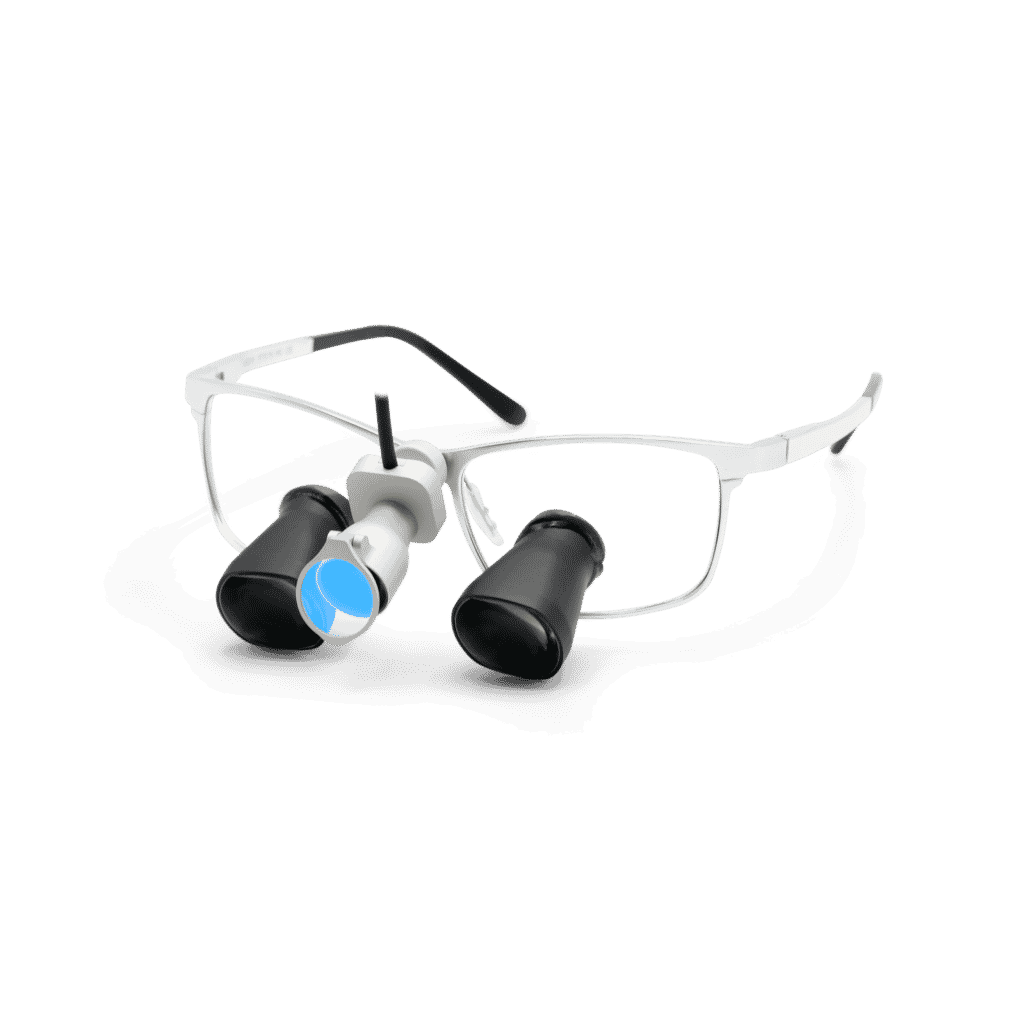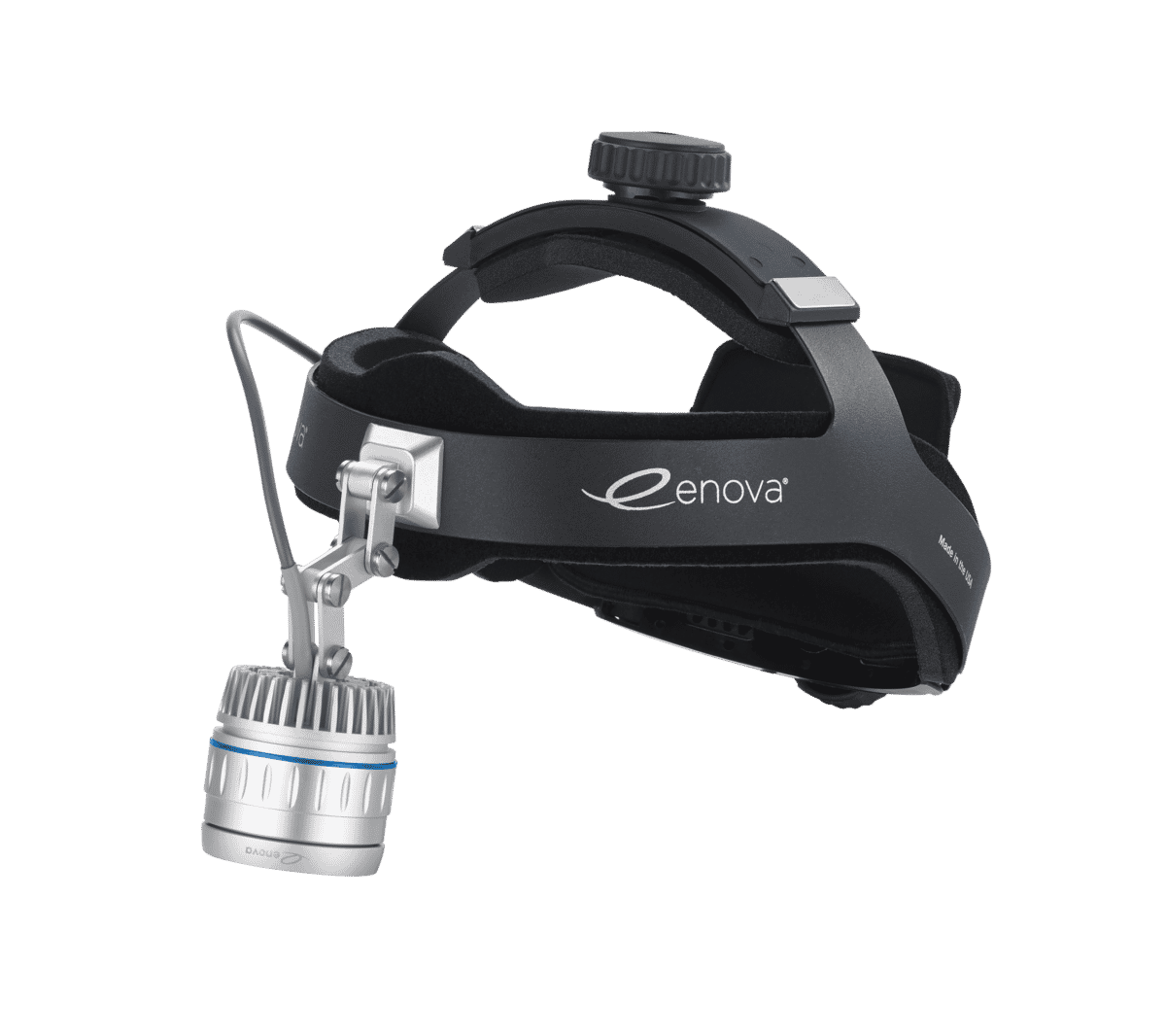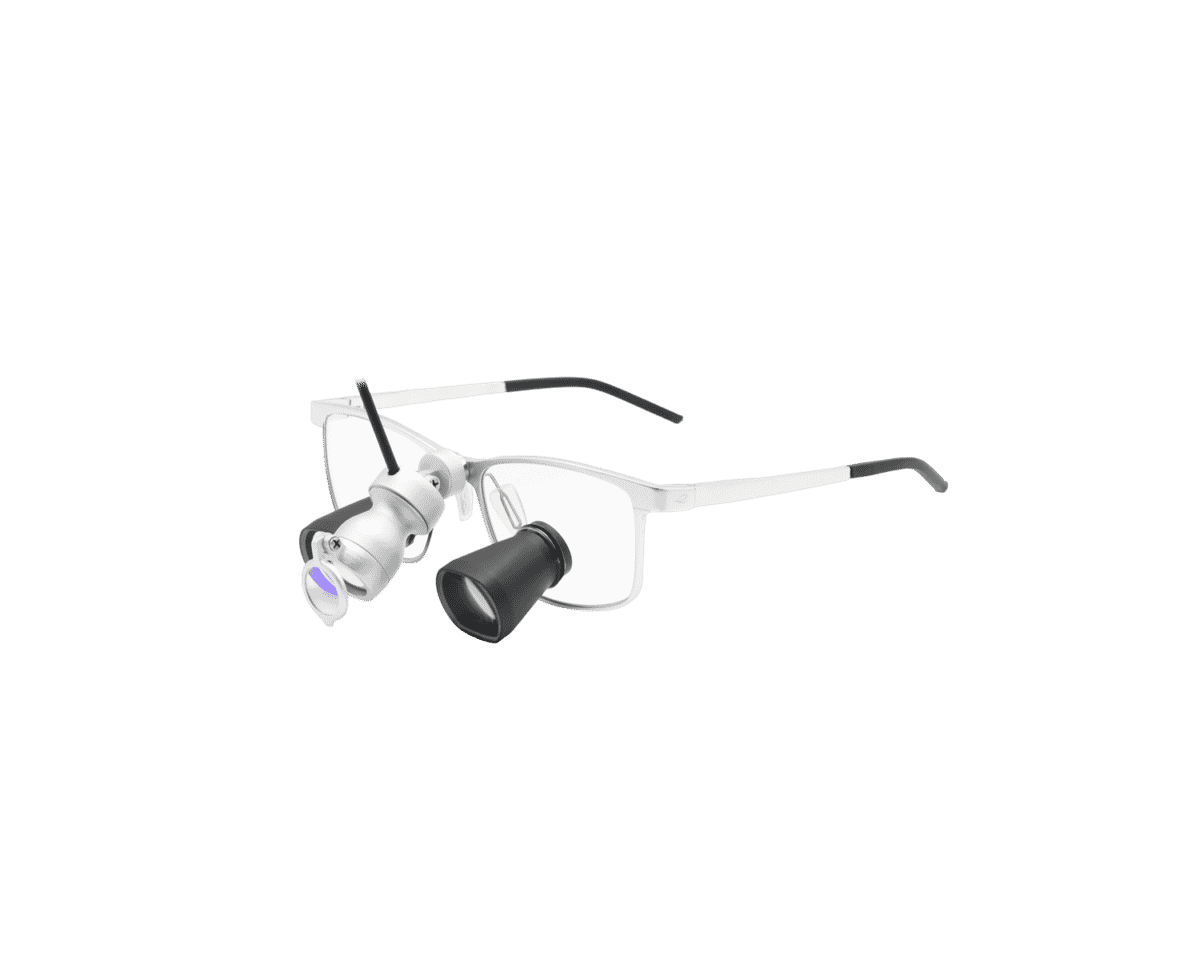1. Make sure your system is set up correctly.
One of the best ways to avoid headlight malfunction in the long run is to properly set up your LED headlight system correctly upon receiving it.
- Begin set up by connecting the battery cable to the headlight. Twist to lock into place.
- Put on headlight and adjust top strap so headlight is positioned at optimal height on your forehead. Use the knob on the back to tighten the headband itself.
- Then plug the cable from the headlight into the battery.
- Use the on/off switch on the battery pack to turn the headlight on. Adjust to maximum intensity by pressing and holding the “+” or “-” button until beeping stops.
- If using the battery belt, put it on and clip the battery pack onto the belt. You may also clip the battery pack onto your scrubs or put it into a pocket.
- Adjust the headlamp to coaxial position, which is between your eyes at the top of your nose. If using loupes, align illumination with your field of vision.
- Adjust the spot size to your liking; spot size adjusts from about 2 to about 5 inches in diameter.
- Readjust light intensity if necessary.
2. Charge your batteries.
Enova’s digital battery packs use rechargeable lithium-ion batteries. Batteries come fully charged but it is a good idea to charge your battery pack before using it the first time. Charge time is approximately three (3) hours. Enova recommends charging the battery pack nightly, like your cell phone. The packs do not need to be fully discharged prior to recharging.
3. Use care with cables and connections.
Enova LED surgical headlight systems include a battery cable that connects the battery pack to the headlight as well as a charger cable and power cord. Enova recommends that care be used with all cables, wires and connections. Twisting, pinching, pulling, bending or otherwise damaging them will cause problems over the long-term.
4. Use the battery belt.
All Enova LED surgical headlight systems come with a sturdy battery belt. Using the belt ensures an even distribution of battery pack weight and allows easy access to the pack.
5. Accurately fit the headband and lamp.
Finding the best fit of the headband and angle of the lamp on your Enova LED surgical headlight will help in preventing neck and shoulder pain.
Pay attention to:
1) the headband fit,
2) light intensity
3) spot size
4) coaxial angle
See Tip 1 for how to adjust.
6. Replace comfort pads.
The comfort pads inside the headband are attached with Velcro and can be removed. All Enova comfort pads are treated with Aegis antimicrobial coating technology to make your headband 99% cleaner than untreated headbands. Still, we recommend routine cleaning with alcohol or disinfectants. Enova recommends replacing comfort pads every three (3) to six (6) months.
7. Clean the headlight system.
All components should be wiped with alcohol or disinfectant after each use.
8. Avoid dropping and preventable wear and tear.
Enova LED surgical headlight systems are very durable. However, because accidents can happen, Enova recommends that the headlights be treated with care. Store and transport the headlights in their carrying cases and avoid dropping or banging them.
9. Keep batteries and other accessories up-to-date.
Your Enova headlight is covered by a limited warranty. The headlight assembly is protected for five years and all accessories, including batteries, for one year. Overtime, lithium ion batteries like the ones in your headlight battery packs, will slowly degrade. When you notice your battery pack begin to have a lesser charge life, that means its time to upgrade your battery packs. Our online store is an easy, one-stop shop for all Enova headlight accessories.
10. Prepare in advance.
Get to know your Enova LED surgical headlight in advance of using it. Play with it; wear it to become comfortable with it. Become familiar with how to adjust light intensity and be sure to charge the battery packs the day or night before your surgical procedure.




